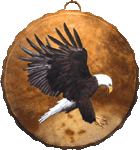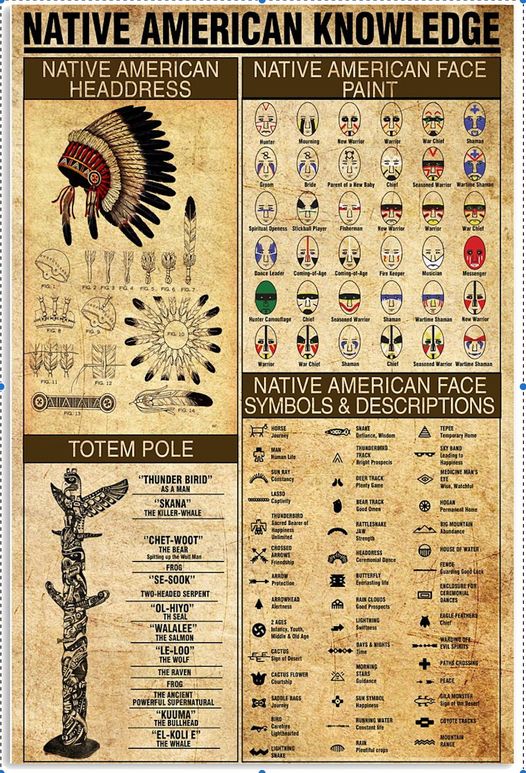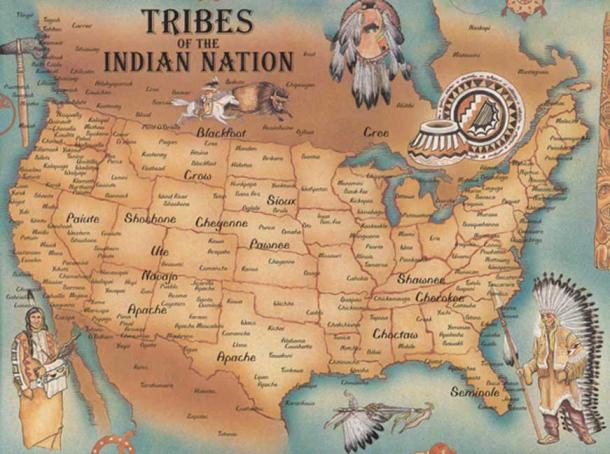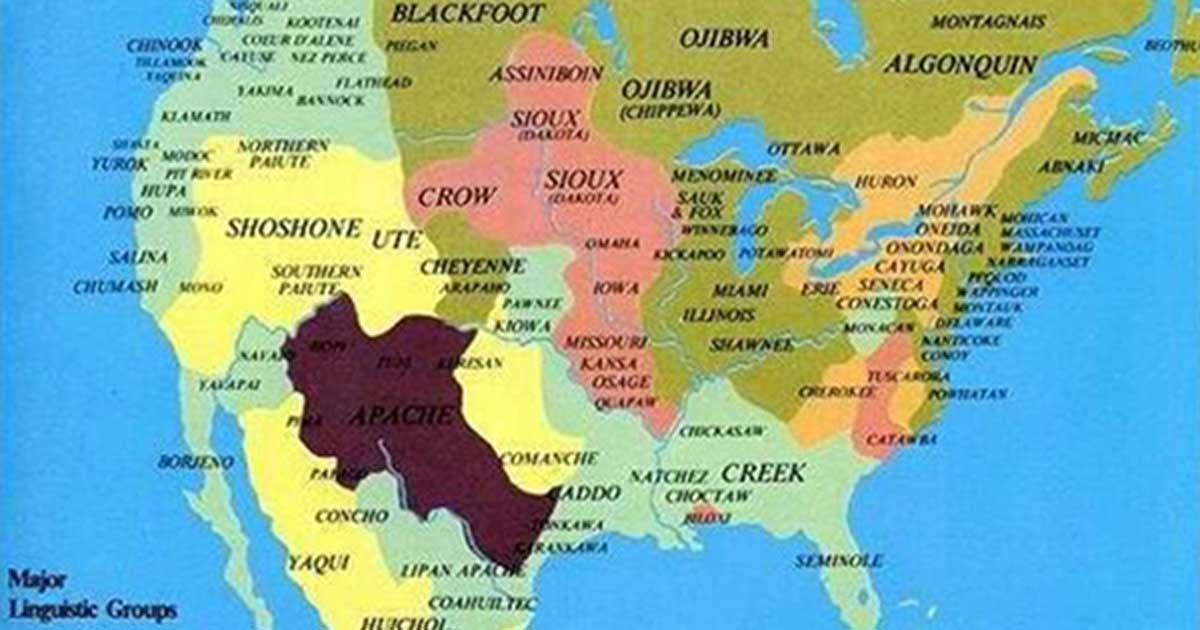|

Brief
History of the Wind River Indian Reservation
From
the Wyoming Blue Book vol. 4, 1991
The
Wind River Valley of west central Wyoming has provided a home
for Native Americans since prehistoric times. Archaeological
evidence gives indications that humans were living in the area
as far back as 5,000 years before the present. Who these early
residents were and their connections to modern day Indians
cannot be determined,but clearly the association of the
Shoshone tribe with the Wind River area is the most enduring.
Early Shoshone
Occupation
The
Shoshone tribe traces its origins to the Great Basin where they
were among the first of the Indian tribes in the region to
obtain horses through trade with the Spanish. Most reliable
research suggests that the Shoshone first began using horses
around 1700. Although they were already exerting their
influence east of the Rocky Mountains, the horse enabled the
Shoshone Indians to expand their territory across a broad
portion of the northern plains. Some researchers suggest the
Shoshone controlled the plains from the Arkansas River in
Colorado to the Bow River in Saskatchewan. They were clearly
among the first of the mounted buffalo hunting cultures.
But
the golden age of Shoshone domination was short-lived. Other
tribes-from the east and the north- moved onto the plains and
asserted their influence. And by 1800 the eastern most bands of
the Shoshone tribe were confining their activities to the
Wyoming and southeastern Montana areas. With the arrival of
Anglo-Europeans on the northern plains and in the Rockies,
diseases spread among the Shoshone and tribal populations
declined. By 1850, white emigration along the Oregon-California
Trails was having an impact on game herds and competition
between the buffalo hunting tribes of the plains increased. The
Crow, Sioux,Cheyenne and Arapaho people hunted the buffalo
herds of the Wind River Valley more frequently and the Shoshone
were increasingly found on the southwestern slopes of the Wind
River Mountains. Historical accounts from the 1860s indicate a
growing reluctance on the part of the Eastern Shoshones to hunt
east of the Wind River Mountains despite the fact that buffalo
could no longer be found west of the Wind Rivers.
Conflict and
Negotiations with Whites
1863 Fort Bridger
Treaty
The
destiny of the Shoshones had become closely associated with the
expanding non-Indian populations in the area. During the 1860s,
the Eastern Shoshone traded at Fort Bridger and became familiar
with the U.S. military forces in the area. They were frequent
visitors in the Mormon communities of Utah and southeastern
Idaho. Many accounts exist of contact between Shoshones and
travelers on the emigrant trails. In most cases, the
relationship between the Eastern Shoshone Indians and
non-Indians was amicable.
In
1863, following a conflict between the U.S. military and their
Idaho relatives, the Eastern Shoshone - under the leadership of
Washakie - entered into a treaty of
friendship with the U.S. government. The treaty acknowledged as
Shoshone country as a large area of land in southwestern
Wyoming, northwestern Colorado, northeastern Utah and eastern
Idaho; provided for the safety of travelers, settlements,
military out posts; and guaranteed a twenty-year annuity to
provide supplies for the Shoshone people as compensation for
the "inconvenience" caused by the establishment of
agricultural and mining settlements in the area.
1868 Fort Bridger
Treaty
Five
years later, as preparations for the construction of the
trans-continental railroad were underway, the U.S.
government needed to clarify land ownership so it could make
the necessary grants to the Union Pacific Railroad. There was
also concern about the threat of attack from the more
aggressive tribes roaming in northern Wyoming. A reservation
for the Shoshones in the Wind River Valley seemed to solve
several problems. What ever the motivations of the government
negotiators, Washakie was satisfied. The hunting was better
there and the government had agreed to protect the Shoshones
from attack by their Indian neighbors to the north.
Against
that back-drop, the U.S. Government and the Eastern Shoshones
concluded negotiation and on July 3, 1868 at Fort Bridger
signed the treaty that
created the Shoshone reservation. The treaty provided for
definite boundaries,a system by which individual tribal members
could select land for the development of farming skills,
educational services, annuities, and the establishment of a
military post.
The
military post, called Camp Augur, was established in 1869 on
the site where Lander is now located. A year later the post was
moved to the Little Wind River and renamed Camp Brown. The Wind
River Agency came to life nearby and soon the Shoshones were
establishing their lodges in the surrounding areas.
Early Years on the
Reservation
Some
historians say the early years on the reservation were good.
The first attempts at farming were highly successful, hunting
was excellent, annuities arrived on time, and the government
provided ample quantities of beef on a regular basis. But by
1874, agriculture was on the decline. Much of the land that had
been cultivated had gone back to sod and weeds. Hunting
pressure began to reduce the game herds.
The
most significant development on the reservation during the
1870s, however, was the arrival of the Northern Arapaho Tribe.
Early Arapaho on
the Great Plains
The
Arapaho Indians came to the plains from the northeast but
little is known as to when they arrived. Some of the earliest
references to the Arapaho place them on the Cheyenne River in
what is now South Dakota in 1795. As the power and population
of the Sioux tribes increased, the Arapaho drifted southward.
By the early 1800s, they are recorded as being concentrated
between the Platte and Arkansas Rivers. To offset the
advantages enjoyed by the Sioux, the Arapaho occasionally
allied themselves with the Cheyenne to hold their territory and
assert their rights to hunt the areas they considered their
own. The increasing competition for the available hunting
grounds was aggravated when non-Indian travel began in earnest
over the Oregon-California Trails. By 1850, such travel was
having an impact on buffalo herds and inevitably led to
conflicts between travelers and the Native Americans who saw
the effects on their ability to subsist in the country.
Conflict and
Negotiations with Whites
1851 Fort Laramie
Treaty
In
1851, more than 9,000 Arapahos, Cheyenne and Sioux gathered on
Horse Creek east of Fort Laramie for a treaty conference with
U.S. government officials. The agreement they reached called
for peace between the various tribes and with U.S. citizens.
The tribes also agreed to recognize the rights of the various
tribes to control certain territories. The Arapaho and Cheyenne
agreed to share the country between the Arkansas and the North
Platte Rivers. The treaty,
however, had little long-term effect on Indian-White
relationships. As emigrants increased in numbers, so did the
number of conflicts between Indians and whites. Buffalo herds
continued to diminish under pressure from white market hunters
and the 1859 discovery of gold in Colorado brought thousands of
new settlers to the region. It was during this time that the
bands which would become known as the Northern Arapaho began to
roam more frequently north of the Platte River.
In
1864, a group of whites attacked and slaughtered a camp of
Cheyenne and Southern Arapaho camped on Sand Creek in Colorado.
Word of the massacre spread to the northern tribes and in the
years that followed, the Northern Arapaho joined with the
Cheyenne and Sioux in open warfare against whites across
Wyoming, Colorado and Kansas.The Southern Arapaho eventually
could do little but accommodate the settlement of north-central
Colorado. In 1865 they accepted a small reservation in Indian
Territory (now Oklahoma). But the Northern Arapaho continued to
roam the Powder River Country of Wyoming, asserting their
determination to negotiate independently with the U.S.
government.
1868 Fort Laramie
Treaty
Those negotiations began
in 1868 at Fort Laramie. There the Northern Arapaho agreed to
settle on a reservation within one year - either on the
Missouri River with the Sioux, in Indian Territory with the
Southern Arapaho,or on the Yellowstone with the Crow. But the
Northern Arapaho wanted nothing to do with the southern
country, and they were leery of being over whelmed through
close association with larger and stronger tribes. So Northern
Arapaho leaders began to seek the assistance of army officers
to help them settle on the Shoshone Reservation in Wyoming.
Bates Battle
Prior
conflicts with the Arapaho made Washakie and the Eastern
Shoshone uncomfortable with such an arrangement and an 1869
meeting to discuss the placement of the Arapaho on the
reservation fell through. But in 1870, it was agreed that the
Arapaho could reside on the reservation temporarily. The
arrangement lasted only a few months. Whites in the Lander area
and in the South Pass gold fields blamed the newly-arrived
Arapaho for the killing of several settlers. A short time
later, a 250-man force of settlers and miners attacked two
Arapaho camps near Lander and once again the Northern Arapaho
were on the move. They resisted government efforts to place
them on various reservations until an armed conflict that came
to be known as the Bates Battle occurred in 1874.
The
main camp of the Northern Arapaho was located on the headwaters
of Nowood Creek north of present-day Lost Cabin when it was
discovered by some Shoshone scouts. Several days later, the
camp was attacked by a military unit from Camp Brown and a
large contingent of Shoshone Indians. Although the Arapaho were
able to escape, they lost a large number of horses and many of
their lodges were destroyed. It was the last time the Northern
Arapaho would fight the whites.
Shared Reservation
Arapaho Settled on
the Shoshone Reservation
The
next few years were a time of intense hardship for the Arapaho.
They subsisted as best they could while their leaders -
foremost among them were Black Coal and Sharp Nose - made new
efforts to obtain a suit able reservation. They focused their
efforts on establishing a friendly relationship with army
officers and began by enlisting as scouts for the military.
General George Crook interceded on behalf of the Arapaho and
attempted to secure a reservation for them on the Tongue River
but was unsuccessful. But finally in 1877, Arapaho efforts paid
off during a visit to Washington, D.C. and a meeting with
President Rutherford B. Hayes. That meeting led to an agreement
that federal government would assist in the negotiation of an
arrangement under which the Northern Arapaho could join the
Eastern Shoshones on their Wyoming reservation. The Arapaho
began arriving on the Shoshone Reservation in March of 1878 in
spite of the fact that the Shoshone had not yet given their
consent. While government officials continued to assure the
Shoshones that the Arapaho presence was temporary, Arapaho
leaders worked to solidify their position on the reservation
and Arapaho tribal members began establishing camps on the
eastern portion of the reservation.
Changes to the
Reservation
The
reservation they co-occupied with the Shoshone had already
changed from the reservation that had been established in 1868.
Gold miners and settlers had laid claim to lands in the South
Pass area and southern portions of the Wind River Valley before
the reservation was created and white settlement in those areas
continued in the early 1870s. The conflicts arising from those
claims led to the 1874 cession to the United States of that
portion of the reservation lying south of the North Fork of the
Popo Agie River. In return the Shoshones received $5,000 worth
of young cattle every year for five years. Washakie received an
annuity of $500 per year for five years. Known as the Brunot
Cession, this relinquishment of land was the first of several
significant changes in the shape of the reservation.
Pressure
for those changes came from white settlers who sought the
commercial benefits of Shoshone Reservation, 1874 larger
numbers of non-Indian residents in the area. Congressional
passage of the General Allotment Act of 1887 helped increase
that pressure.
The
General Allotment Act has been interpreted as a direct at
tack on the tribal culture by some. Others saw it as a means by
which individual Indians could move toward independence and
self-sufficiency. It allowed individual Indians to claim
specific acreages of reservation land. After a period of years
had passed, title to those lands went to the individual Indian
and the land could be sold or used at the discretion of the
individual. By 1890, non-Indian commercial interests in the
Wind River Valley were urging reservation agents to begin an
aggressive campaign to allot reservation lands. They argued
that quick completion of the allotment process would reveal
large tracts of "unneeded" reservation land, and that
such land could then be opened for settlement by non-Indians.
But there was limited interest in allotments among the 'Wind
River Indians and tribal leaders resisted attempts by
governmental officials to move the process ahead.
Sale of the Hot
Springs
The
next change in reservation boundaries came in 1897. For several
years nonIndians had been settling near the hot springs on
the Bighorn River north of Wind River Canyon. The springs were
located on the extreme northeastern corner of the reservation
but those non-Indians saw the commercial potential of the
springs and wanted to capitalize on it. Bowing to those
interests, the U.S. government sent an agent to negotiate a
deal. Eventually the Wind River Indians sold an area of about
10 square miles surrounding the springs for $50,000. Washakie
seemed happy enough with the deal but he objected strenuously
to the involvement of the Arapaho Indians in the
negotiations.
Allotment
of reservation lands began in 1898 and were pushed aggressively
following the turn of the century. In 1904 the U.S. government
met with the Wind River tribes again to discuss the cession of
largely unclaimed lands north of the Wind River. The ensuing
arrangement called for those lands to be opened for settlement
under the Homestead Act with al l proceeds to be paid to the
tribes for per capita payments, irrigation systems, and
education.
The
land opening came in 1906 and resulted in the establishment of
the town of Riverton along with the farming areas around
Riverton. The income derived from the opening of reservation
lands provided benefits that helped bring an end to a twenty
year period of poverty, hunger and privation.
Hard Times on the
Reservation
Buffalo
herds which existed in the Wind River Valley and the
adjacent Big Horn Basin had declined rapidly after the
settlement of the two tribes in the area. This reduction in
available game put pressure on the herds of cattle which had
come to the tribes as a result of the 1868 treaty and the 1874
Brunot Cession. By 1885, there were fewer than 100 head of
cattle owned by the Indians. While they struggled to develop
farming skills, tribal members became increasingly dependent
upon the rations provided by the government. Some
individuals were able to earn income by serving as scouts for
the military or on work crews for government projects. Many
credible sources, however, indicate that Indians were
frequently cheated in these arrangements. Occasional newspaper
accounts from the early 1890s claimed that Indians on the
reservation were starving, but government officials denied the
reports. There is no doubt about an 1897 epidemic of measles on
the reservation. More than 150 Indians died, most of them
children.
Education on the
Reservation
Education
on the reservation developed at a slow pace. The earliest
efforts were made by traveling teachers. In 1878 a day-school
was established. By 1886 a boarding school was operating near
the agency. At the turn-of-the-century most Indian children
were going to school but that was achieved only through
coercive measures. Educational efforts often were aimed
directly at eradicating tribal customs. Students were often
punished for speaking their native languages.
The
elimination of tribal customs was pursued also by reservation
agents. Among the most memorable measures took place at the
turn-of-the-century when H.G. Nickerson began changing
Indian names on tribal rolls to English-sounding names. Lone
Bear became Lon Brown. Yellow Calf's new name was George
Caldwell.
Religious Changes
Cultural
conflicts arose over religion as well. Episcopalian missionary
Reverend John Roberts came to the reservation in 1883 and began
work in the Fort Washakie area, primarily with Shoshone people.
A year later, Father John Jutz established a Catholic mission
in the area occupied by Arapahos which became known as St.
Stephen's Mission. Although the missionary efforts brought many
Indians to these white religions, native people struggled to
reconcile the teachings of those religions with their cultural
heritage. Within this context several native religious
movements developed.
The Ghost Dance
The
Ghost Dance phenomena of the late 1880s originated with a
Nevada Paiute named Wovoka. Wovoka revealed that he had died
for a time during which God told him to return to his people
and preach the doctrines of love and peace. He claimed that God
had also given him new words to the songs of the old Ghost
Dance. If these songs were sung while dancing, Wovoka taught,
white people would disappear and dead Indians would return to
life. Wind River Arapahos embraced the Ghost Dance with zeal,
but the Shoshone were more skeptical. When the predicted new
world failed to materialize, Arapahos began drifting away from
the dance. Others persisted and that led to the banning of the
dance by the reservation agent. But Arapahos continued the
Ghost Dance in secret for a number of years. Indeed, Wovoka is
reported to have visited the Wind River Reservation in 1910 and
an enthusiastic dance was held in his honor. Arapahos lined up
to shake his hand, paying as much as $20 for the privilege.
Peyote and the
Native American Church
Peyote
rituals came to the Arapahos from Oklahoma in the mid-1890s and
gained numerous participants. The Shoshones began to
participate in the rituals following 1910. The use of peyote in
religious rituals eventually achieved continuity after the
establishment of the Native American Church in 1918.
Indian
Reorganization Act
For
many years into the 20th century reservation governance
continued much as it had in the 1880s and 1890s. The
government's agents exercised enormous control over the daily
lives of people living on the reservation. Tribal elders
functioned as councils through which reservations residents
could participate in reservation governance, but most agents
attempted to use those councils to further their own agendas.
In the 1920s the Arapaho and Shoshone tribal councils began
meeting as a joint business council in order to develop a
coordinated approach to common concerns, interests and
problems. In the 1930s an effort developed to create a
constitution and bylaws under which the joint business council
would assume some responsibility for the governance of the
reservation. But it never received the blessing of Bureau of
Indian Affairs officials in Washington. Then in 1934 Congress
passed the Indian Reorganization Act and signaled a major
change in the way the federal government would deal with
Indians. The act offered reservation tribes who voted to accept
its provisions increased freedom to regulate their internal
affairs. But it also contained language regarding land
allotments which Wind River Indians found disconcerting and
both the Shoshones and Arapahos eventually voted not place
themselves under the provisions of the act. Instead, the two
tribal councils continued to work separately and in cooperation
to develop their methods of operation and gradually assumed a
greater degree of responsibility for the operation of the
reservation.
Court Suits and a
Name Change
The
1930s also saw the culmination of the conflict between the two
Wind River tribes which began when the Arapahos were settled on
the Shoshone Reservation in 1878. Omaha attorney George M.
Tunison had begun working with the Shoshones in the 1920s to
resolve their claim that the government had violated treaty
provisions by placing the Arapahos on the reservation. Finally,
in 1927, Congress passed an act which empowered the Shoshones
to sue the government. The case dragged on for more than ten
years until 1938 when Court of Claims awarded the Shoshones
more than $4 million dollars and legitimized the Arapahos claim
to half of the reservation. It was at that time that the
reservation officially became known as the Wind River Indian
Reservation.
Tribal Lands
Returned
A
year later the federal government acted to change the
reservation boundaries for the last time. It restored to the
tribes those lands north of the Wind River which had been ceded
for settlement in the 1904 agreement but which had not been
homesteaded by non-Indian settlers. The action left an island
of non-Indian land-known as the Riverton Reclamation
Project-within the exterior boundaries of the reservation.
Modern Era
The
modern era on the Wind River Reservation is highlighted by the
assertion of tribal sovereignty. Federal authorities have
encouraged the tribes' representatives to assume more
responsibility for their own affairs and the financial
responsibility for many reservation services. But while council
members have been ready to assume more authority they continue
to pressure the federal government to assume more of the costs.
They view federal services as treaty obligations, not charity.






|
![]()
![]()